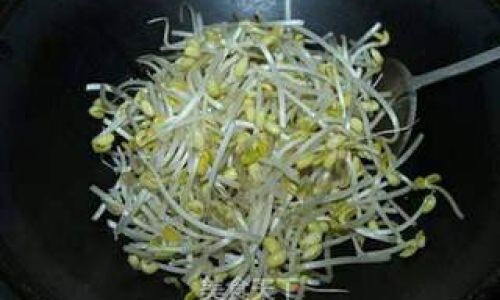Introduction
Radishes, with their crisp texture and peppery flavor, are often overlooked in the vegetable kingdom despite their numerous health benefits and culinary versatility. These small, round, or elongated root vegetables come in a variety of colors, including red, white, black, and green, each offering a unique taste and nutritional profile. Whether you’re a seasoned chef or a home cook looking to incorporate more vegetables into your diet, learning how to properly select, prepare, and enjoy radishes can elevate your meals and provide a delightful burst of freshness. This comprehensive guide will walk you through everything you need to know about how to eat radishes, from basic preparation techniques to innovative recipes that will surprise and delight your taste buds.
Chapter 1: Understanding Radishes

1 Types of Radishes
Radishes are classified into several varieties, each with its own distinct characteristics. The most common types include:
- Cherry Radishes: Small, round, and often red, these are the most familiar type found in grocery stores. They have a mild peppery taste.
- Daikon Radishes: Large, white, and elongated, daikons have a milder flavor and a juicy, crisp texture. They are often used in Asian cuisine.
- Black Radishes: With a dark purple-black skin and white flesh, these radishes are quite peppery and are often used in pickles or cooked dishes.
- Watermelon Radishes: Featuring a bright green outer layer and white flesh with pink hues, these radishes are visually striking and have a slightly sweeter, less intense peppery flavor.
2 Nutritional Benefits
Radishes are low in calories but high in essential nutrients. They are a good source of vitamins C and K, fiber, and various antioxidants. Their high water content makes them hydrating, while their natural enzymes can aid digestion. Additionally, radishes contain anthocyanins (in colored varieties) and other plant compounds that may support heart health and cancer prevention.
Chapter 2: Selecting and Storing Radishes
1 Choosing Fresh Radishes
When selecting radishes, look for firm, smooth, and brightly colored specimens. Avoid those with soft spots, cracks, or discoloration. The leaves should be fresh and green if still attached, as they indicate the radish was recently harvested.
2 Proper Storage
For optimal freshness, store radishes in the crisper drawer of your refrigerator. Remove any leaves, which can draw moisture from the roots and cause them to spoil faster. If you prefer to keep the greens, store them separately in a plastic bag with a damp paper towel. Radishes can last up to a week when stored properly.
Chapter 3: Basic Preparation Techniques
1 Washing and Trimming
Before using radishes, wash them thoroughly under cold running water to remove any dirt or pesticides. Use a vegetable brush if needed to scrub the surface clean. Trim off the root end and any stems or leaves, unless you plan to use the greens in your dish.
2 Slicing and Dicing
Radishes can be sliced thinly for salads, diced for crudités, or grated for use in slaws or relishes. A sharp knife is essential to maintain their crisp texture. For uniform slicing, use a mandoline or food processor fitted with a slicing blade.
3 Peeling
While the skin of most radishes is edible and adds to their crunch, larger varieties like daikons may require peeling due to their thicker skin. Use a vegetable peeler to remove the outer layer.
Chapter 4: Eating Radishes Raw
1 Salads and Crudités
Radishes are a natural addition to fresh salads, adding a burst of color and flavor. Slice them thinly and toss them into mixed green salads, or serve them whole as part of a crudités platter with a creamy dip or yogurt-based dressing.
2 Pickling and Fermenting
Pickling radishes preserves their crispness and enhances their flavor with vinegar, sugar, and spices. Fermented radishes, on the other hand, develop a tangy, probiotic-rich taste that’s great for gut health. Both methods involve submerging cleaned and sliced radishes in a brine solution and allowing them to sit for a few days to weeks, depending on the desired level of tanginess.
3 Radish Butter and Spreads
Blend raw radishes with softened butter, cream cheese, or sour cream for a spread that pairs beautifully with bagels, toast, or crackers. Add a pinch of salt, pepper, and herbs like dill or chives for extra flavor.

Chapter 5: Cooking with Radishes
1 Roasting
Roasting radishes brings out their natural sweetness and creates a caramelized exterior. Toss them with olive oil, salt, and pepper, and roast at 400°F (200°C) for about 15-20 minutes, until tender and slightly browned. They can be served as a side dish or added to roasted vegetable medleys.
2 Sautéing and Stir-Frying
Sautéing radishes quickly in a hot pan with a bit of oil or butter retains their crispness while adding depth to their flavor. Stir-frying them with other vegetables and a sauce makes for a colorful and nutritious dish.
3 Soups and Stews
Radishes can add a fresh, slightly tangy note to soups and stews. Puree them into creamy soups for a subtle, earthy flavor, or add them whole or sliced to vegetable-based stews near the end of cooking to maintain their texture.
4 Pickled and Preserved Radishes
Beyond traditional pickling, radishes can be preserved in various ways, such as making radish kimchi, pickled radish slices for sandwiches, or even radish relish to accompany grilled meats or fish.
Chapter 6: Innovative Radish Recipes
1 Radish and Avocado Salad
Combine thinly sliced radishes with diced avocado, cherry tomatoes, red onion, and cilantro. Drizzle with a lime vinaigrette made from lime juice, olive oil, honey, and Dijon mustard. This vibrant salad is perfect for summer lunches or as a side dish.
2 Daikon Radish Noodles
Using a spiralizer or mandoline, turn daikon radishes into noodles (also known as zoodles). Toss them with a light dressing of soy sauce, sesame oil, rice vinegar, and minced garlic. Add protein like grilled shrimp or tofu, and garnish with chopped scallions and sesame seeds for a low-carb, flavorful meal.
3 Radish and Goat Cheese Tart
Create a savory tart by layering thinly sliced radishes over a buttery puff pastry base. Sprinkle with crumbled goat cheese, drizzle with honey, and bake until the pastry is golden and the cheese is melted. Serve warm or at room temperature for a sophisticated appetizer or light meal.
4 Radish and Beet Kvass
Ferment radishes and beets together with water, salt, and a starter culture (like whey or previously fermented vegetables) to make a nutritious, probiotic-rich kvass. This tangy, slightly sweet beverage is refreshing and can be enjoyed on its own or used as a base for cocktails.
5 Radish and Potato Hash
Dice radishes and potatoes, then sauté them together in a skillet with onions, garlic, and rosemary until crispy and golden. Season with salt and pepper, and serve as a hearty breakfast or brunch dish topped with a fried egg or a dollop of yogurt.
Conclusion
Radishes are more than just a garden-fresh addition to salads; they are a versatile ingredient that can transform your culinary landscape. From raw preparations to cooked dishes, pickled treats to fermented beverages, there are endless ways to enjoy these peppery, nutritious vegetables. By exploring the various types of radishes, mastering basic preparation techniques, and trying innovative recipes, you can unlock a world of flavor and health benefits. So, the next time you see a bunch of radishes at the market, don’t pass them by—embrace their unique charm and start incorporating them into your meals today. Happy cooking!





0 comments